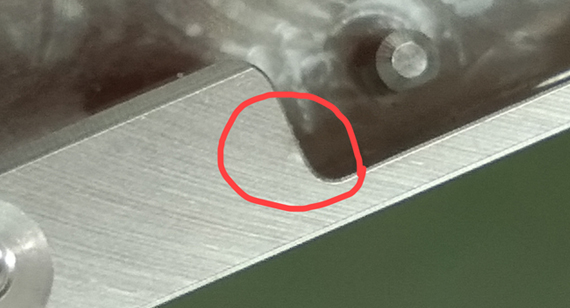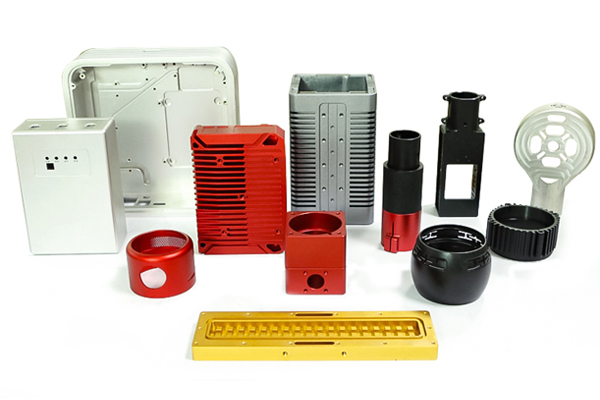15 years one-stop China custom CNC machining parts factory

Hey there I’m VMT Sam!
With 25 years of CNC machining experience we are committed to helping clients overcome 10000 complex part-processing challenges all to contribute to a better life through intelligent manufacturing. Contact us now
 261 |
Published by VMT at Jan 04 2024
261 |
Published by VMT at Jan 04 2024
1. Introduction
In CNC machining factories, the surface quality of threaded CNC machined parts plays a crucial role in the performance and lifespan of products. However, during the machining process, various factors may contribute to the occurrence of surface burrs on parts. These burrs not only affect the aesthetics of the parts but can also have adverse effects on product performance and safety. Therefore, implementing effective preventive measures to avoid or reduce the occurrence of surface burrs on threaded CNC machined parts is of utmost importance. This article will focus on exploring strategies to prevent the problem of surface burrs on threaded CNC machined parts.

To effectively prevent the formation of burrs, it is essential to understand the reasons behind their occurrence. Typically, the generation of burrs is related to the following aspects:
Tool Issues: The sharpness and durability of tools directly impact burr formation. Severe tool wear or poorly designed tools can increase cutting forces, leading to burr formation.
Improper Cutting Parameters:Inappropriate settings of cutting parameters such as cutting speed, feed rate, and cutting depth may result in increased cutting forces, subsequently causing burrs.
Workpiece Material Issues: Factors such as the hardness, composition, and heat treatment status of the workpiece material can contribute to burr formation during the cutting process.
Inadequate Coolant Lubrication: Sufficient use of coolant lubricants during the cutting process effectively reduces friction and lowers cutting temperatures. Insufficient coolant lubrication may lead to burr formation.
Operator Skill Issues: The skill level of operators also influences burr formation. Inadequate clamping, inaccurate tool installation, and other operational errors may trigger burr formation.

3. Preventive Measures for CNC Machining Parts Burrs
Addressing the causes mentioned above, the following preventive measures can be implemented:
Selecting Appropriate Tools: Choose tools with suitable materials and geometric parameters based on the characteristics of the machined material and processing requirements. Ensure tools are sharp and durable, especially in machining stages prone to burr formation.
Optimizing Cutting Parameters: Set cutting parameters such as speed, feed rate, and cutting depth according to the hardness, composition, and cutting conditions of the material. Moderating cutting speed and feed rate can reduce cutting forces and minimize burr formation.
Controlling Workpiece Material Quality: Ensure the quality of workpiece materials meets machining requirements. Specifically, control factors such as material hardness, composition, and heat treatment status within reasonable ranges. For materials prone to burr formation, consider improving heat treatment processes to reduce material hardness and cutting forces.
Using Sufficient Coolant Lubrication: Adequately use coolant lubricants during the cutting process to decrease cutting temperatures, mitigate tool wear, and prevent material deformation. Additionally, lubricants aid in reducing friction between the tool and workpiece.
Enhancing Operator Skills: Provide regular training for operators to ensure they are proficient in correct operating methods and techniques. Proper installation and adjustment of tools, secure clamping of workpieces, and maintaining machine tool accuracy are measures to reduce the risk of burr formation.
Regular Inspection and Maintenance of Machine Tools: The precision and stability of machine tools significantly impact the quality of machined parts. Conduct regular inspections and maintenance on machine tools to ensure they are in good working condition, reducing the risk of burrs caused by equipment malfunctions or accuracy loss.
Adopting Advanced Process Technologies: Incorporate advanced processing technologies such as high-speed cutting and hard cutting, which are known for their efficiency and low cutting forces. These technologies can effectively minimize burr formation. When feasible, adopting these advanced process technologies can enhance the surface quality of machined parts.
Strengthening Production Process Control: Establish a robust production process control system, ensuring effective monitoring at every stage from raw material intake to finished product delivery. Stringent process control reduces the impact of various factors on part surface quality, consequently minimizing burr formation.
Introducing Automated Inspection Equipment: Implement automated inspection equipment on the production line for quick and accurate surface inspection. Automated inspection reduces human error and oversight, enhancing production efficiency and product quality.
Formulating Emergency Plans: Develop corresponding emergency plans for potential burr issues. In the event of burr problems, swift and effective measures outlined in the emergency plans can be implemented to minimize losses and disruptions. Emergency plans also aid in better responding to unforeseen situations during the production process.

4. Conclusion
In conclusion, preventing surface burrs on threaded CNC machined parts requires a comprehensive approach. By applying a combination of measures such as selecting appropriate tools, optimizing cutting parameters, controlling workpiece material quality, using sufficient coolant lubrication, enhancing operator skills, regular inspection and maintenance of machine tools, adopting advanced process technologies, strengthening production process control, introducing automated inspection equipment, and formulating emergency plans, the risk of surface burr formation can be effectively reduced. Additionally, continuous technological innovation and research play a crucial role in preventing burrs. By continually improving machining processes and developing new tool materials, the surface quality of threaded CNC machined parts can be further enhanced to meet evolving market demands.
When implementing these preventive measures, attention should be given to the following points:
Operator Training: Regularly train operators to familiarize them with the causes of burr formation and preventive measures, ensuring they master correct operating methods and techniques.
Equipment Status Monitoring: Establish a machine tool status monitoring system to real-time monitor the operational status of machine tools, ensuring they are in good working order.
Quality Inspection and Feedback: Strengthen quality inspections to promptly identify and address burr issues. Establish a quality feedback mechanism to collect and improve quality issues during the production process.
Continuous Improvement: Continuously track and analyze burr issues, summarize experiences and lessons learned, and continuously optimize preventive measures to improve the stability and reliability of the machining process.
Expert Support: Seek support and assistance from experts when encountering challenging quality issues. Experts can provide technical guidance and solutions to address specific problems.
Compliance with Safety Procedures: Adhere to safety operating procedures during the machining process to ensure the safety of personnel and equipment. Implement appropriate protective measures to reduce the risk of harm to operators from burrs.
Establishing Information Sharing Platforms: Facilitate information exchange and cooperation among various departments within the enterprise by establishing information-sharing platforms. Collaboratively address burr issues to enhance overall machining capabilities.
Reinforcing Supply Chain Management: Effectively manage the supply chain to ensure the quality of raw materials and components meets requirements. Establish a good cooperative relationship with suppliers, jointly addressing burr issues to reduce their occurrence risk.
Integrating Intelligent Technologies: Introduce intelligent technologies such as artificial intelligence and big data analysis when feasible. These technologies enable real-time monitoring and optimization of the machining process, increasing the level of automation in preventing burr formation.
Establishing a Scientific Quality Management System: Develop a scientific quality management system that clearly outlines quality control requirements and responsibilities at each stage. Through an effective quality management system, ensure the implementation and continuous improvement of preventive measures for burrs.
5. Conclusion
In summary, to prevent the occurrence of surface burrs on threaded CNC machined parts, a multifaceted approach is required. By selecting appropriate tools, optimizing cutting parameters, controlling work piece material quality, and implementing a range of other measures, the risk of burr formation can be effectively reduced. Furthermore, a strong focus on continuous improvement and innovation is essential for enhancing the surface quality of CNC machined parts to meet evolving market demands. When implementing preventive measures, it is crucial to prioritize operator training, monitor equipment status, conduct regular quality inspections, and establish effective information-sharing platforms. By adopting these strategies, enterprises can improve their competitiveness, meet market demands, and achieve sustainable development.
Ready To Start Your Next Project?
Get Instant Quote

Request a Free Quote
Send us a message if you have any questions or request a quote. We will get back to you ASAP!